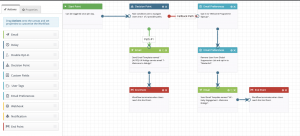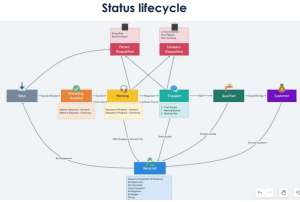— October 6, 2017

Following on from last week’s blog post about website demographics, we will step further into the stories behind your analytical figures to find out just who your audience are, how they behave and what motivates them.
Once you gain a deeper understanding of exactly what it is that your website visitors are looking for, you’ll be able to tailor your site more precisely to encourage more website engagement and drive more business.
But what are website psychographics?
According to Wikipedia, psychographics is “…the study of personality, values, opinions, attitudes, interests, and lifestyles.”
Typical subsets of psychographics that are commonly used in marketing and in related web design include:
- Spending habits
- Hobbies and interests
- Attitudes and values
- Lifestyle indicators
- Political views
- Media usage
We’re going to take a look at some of these and find out how gaining a little knowledge in these areas can make a huge difference to both our website design and our approach to marketing strategy.
Spending habits
Whilst you might not think it’s particularly easy to find out the spending habits of your users, there are various ways in which you might do so. As well as the obvious records you will have of your existing clients, Google Analytics has a feature called ‘In-Market Segments’, where you can see the users that are actively researching and clicking on products and services across Google, YouTube and other partner sites.
As well as providing a useful insight into who is already visiting your site, ‘In-Market Segments’ allow you to target users who are already interested in the types of product or service you offer, and makes much more sense than trying to approach people ‘cold’. It’s a useful and underused feature.
Hobbies and interests
Another fascinating part of Google Analytics is a section called ‘Affinity Categories’, where it’s possible to see an overview of your visitors’ lifestyles and interests.
These are arranged into broad categories such as ‘shutterbugs’ (photography lovers), technophiles, travel buffs or home décor enthusiasts. The information here is gained from a range of sources, from Google’s own information about its visitors (e.g. from Google+ profiles) and from people’s online browsing history.
By creating ‘Advanced Segments’ in Google Analytics, you can drill down further and find out just how different groups of people behave on your site. This, in turn, should affect how you target your online marketing. For example, if you find out that movie lovers rarely stay long on your site, you might choose to include more videos or movie-related content to keep them engaged.
Attitudes and values
Understanding your website audience’s attitudes and values – what makes them tick – is one of the most important parts of website psychographics, and is one that can’t simply be found out for free in Google. To gain this level of understanding, there’s no better way than getting out there and asking people.
Whether it’s through questionnaires or surveys, there are several key points you want to find out here:
- What needs do they have?
- What drives them to make a purchasing decision?
- What do they like about your website and why?
- What do they dislike about your website and why?
- What do they like about your existing services or products and why?
- What do they dislike about your existing services or products and why?
- How do they think you could improve your services or products?
- Are there any barriers or frustrations that they experience?
- How can you best reach them? Where do they hang out?
- What type of content do they like (text, images, video etc.)?
You might choose to focus just on one or two of these questions or drill down and concentrate only on a particular product range or one service. The important thing is that you really listen to the answers you receive. Rarely will your visitors be wrong.
Lifestyle indicators
Lifestyle indicators, such as car ownership, type of property and purchase history can also tell you something about your users’ financial status and the type of lifestyle to which they might ascribe.
Of course, there are exceptions to the rule, but when dealing with large numbers of visitors, it’s usually safe to assume that someone who owns two sports cars, shops at Harrods and lives in a large house in Mayfair is likely to be drawn to an elegant and sophisticated-looking website.
Yes, it’s stereotypical, but when it comes to analysing psychographics, stereotypes are an integral part of the process.
And finally
Of course, these are not the only psychographics you might want to consider. Political and religious views, cultural differences and media usage might all form part of the picture and the more information you can obtain, the more detailed a portrait you will have of your average website visitor.
Digital & Social Articles on Business 2 Community
(60)







